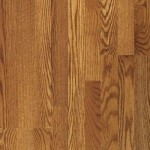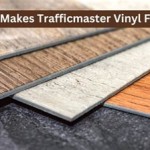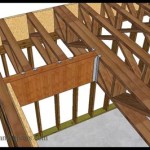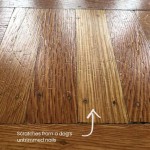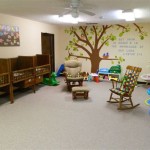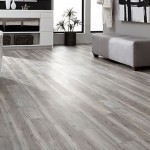Indoor Basketball Court Flooring Materials: A Comprehensive Guide
The selection of appropriate flooring material is paramount in the design and construction of an indoor basketball court. The flooring directly impacts player performance, safety, and the overall longevity of the court. This article provides a detailed overview of various flooring options, their respective advantages and disadvantages, and key considerations for making an informed decision.
Several factors influence the choice of basketball court flooring, including budget constraints, performance requirements, maintenance considerations, and aesthetic preferences. It's crucial to weigh these factors carefully to ensure the selected material optimally meets the specific needs of the facility and its users. The flooring should provide adequate shock absorption to minimize the risk of injuries, offer sufficient traction for quick movements and changes in direction, and be durable enough to withstand the constant impact and wear associated with basketball.
Key Considerations in Flooring Material Selection
Before diving into specific flooring types, it's important to understand the key performance characteristics that define a good basketball court surface. These include shock absorption, traction, ball bounce, durability, and maintenance requirements. Each material offers a unique combination of these characteristics, which should be evaluated in relation to the intended use of the court.
Shock absorption, also known as force reduction, refers to the flooring's ability to absorb impact energy, thus reducing stress on players' joints and minimizing the risk of injuries like sprains and shin splints. Higher shock absorption values are generally preferred, especially for courts used by players of all ages and skill levels.
Traction, or grip, is essential for enabling players to make quick and controlled movements without slipping or losing their footing. The ideal flooring material provides a balance between sufficient grip for stability and enough give to allow for smooth transitions and pivots. Excess traction can hinder movement, while insufficient traction increases the risk of falls.
Ball bounce, or rebound, is a critical factor in the overall playing experience. The flooring material should provide a consistent and predictable ball bounce that meets the standards set by governing bodies like the NBA and NCAA. Inconsistent ball bounce can negatively impact gameplay and player performance.
Durability refers to the flooring's ability to withstand the wear and tear of regular use, including impacts, abrasions, and exposure to cleaning agents. Durable materials require less frequent replacement and can significantly reduce long-term maintenance costs. Consider the expected frequency and intensity of use when evaluating durability.
Maintenance requirements vary significantly among different flooring types. Some materials require frequent cleaning and specialized maintenance procedures, while others are relatively low-maintenance. Consider the availability of resources and personnel for ongoing maintenance when making a selection.
Types of Indoor Basketball Court Flooring Materials
Several types of materials are commonly used for indoor basketball courts, each with its own unique set of characteristics and advantages. The most popular options include hardwood, synthetic materials (such as polypropylene and polyurethane), and rubber flooring.
Hardwood Flooring: Hardwood remains a popular choice for professional and collegiate basketball courts due to its classic aesthetic, excellent ball bounce, and time-tested performance characteristics. Maple is the most commonly used hardwood species due to its hardness, durability, and consistent grain. Hardwood flooring provides a firm, responsive surface that promotes optimal ball bounce and allows for quick and precise movements. However, hardwood requires regular maintenance, including sanding and refinishing, to maintain its performance and appearance. It is also susceptible to moisture damage, making it unsuitable for environments with high humidity or potential water leaks. The initial cost of hardwood flooring can be higher compared to some synthetic options, but its longevity and performance often justify the investment in high-level competitive environments.
The installation process for hardwood flooring is critical to its performance and longevity. It typically involves installing a subfloor, followed by the hardwood planks, which are then sanded, sealed, and finished with multiple coats of polyurethane. Proper installation helps to ensure a level surface, consistent ball bounce, and resistance to moisture damage. Regular maintenance includes sweeping, mopping with appropriate cleaning solutions, and periodic screening and recoating to maintain the finish and prevent wear. More extensive maintenance, such as sanding and refinishing, is typically required every 10-15 years, depending on the level of use.
Synthetic Flooring: Synthetic flooring options have gained popularity due to their versatility, durability, and relatively low maintenance requirements. These materials are typically made from polypropylene, polyurethane, or recycled rubber, and are available in a wide range of colors, textures, and designs. Synthetic flooring offers good shock absorption, traction, and ball bounce, making it suitable for a variety of skill levels and playing styles. They are also resistant to moisture damage and can be easily cleaned and maintained.
Polypropylene flooring is a modular system consisting of interlocking tiles that can be quickly and easily installed over a concrete or asphalt subfloor. This type of flooring is highly durable, resistant to wear and tear, and offers good shock absorption. Polyurethane flooring is a seamless, poured-in-place system that provides a smooth, consistent surface with excellent shock absorption and traction. It is a popular choice for high-performance basketball courts due to its ability to be customized to meet specific performance requirements. Recycled rubber flooring is an environmentally friendly option made from recycled tires. It offers excellent shock absorption and is often used in multi-purpose facilities where versatility is important.
Synthetic flooring options offer a range of performance characteristics and price points. Polypropylene tiles are generally the most affordable option, while polyurethane systems are typically the most expensive. The specific choice will depend on the budget, performance requirements, and aesthetic preferences of the facility. Regular maintenance for synthetic flooring typically involves sweeping, mopping with appropriate cleaning solutions, and occasional deep cleaning to remove dirt and debris. Repairing damage to synthetic flooring is generally easier and less expensive than repairing damage to hardwood flooring.
Rubber Flooring: Rubber flooring is another synthetic option, often made from recycled materials, notable for its shock absorbency and durability. It's a softer surface than hardwood or many synthetic options, providing excellent cushioning for players' joints. However, the ball bounce might not be as precise as on hardwood or polyurethane surfaces. Rubber flooring is water-resistant and relatively easy to clean, making it suitable for multi-purpose facilities where spills and moisture are concerns. It is also commonly used in weight rooms and fitness areas adjacent to basketball courts.
Rubber flooring often comes in rolls or interlocking tiles. Installation can be relatively straightforward, particularly with interlocking tiles. However, proper preparation of the subfloor is essential to ensure a level surface and prevent issues with moisture. Maintenance typically involves sweeping, mopping, and occasional deep cleaning. The softer surface of rubber flooring can be more susceptible to scratches and dents compared to harder materials like hardwood or polypropylene, but its shock absorption benefits often outweigh this drawback, particularly in facilities catering to a wide range of ages and skill levels.
Factors Affecting the Lifespan of Basketball Court Flooring
The lifespan of basketball court flooring is dependent on several factors, including the type of material, the amount of use, the quality of installation, and the frequency and effectiveness of maintenance. Understanding these factors can help facility managers and owners maximize the lifespan of their flooring investment and minimize long-term costs.
The type of material itself significantly influences its lifespan. Hardwood flooring, with proper maintenance, can last for decades. High-quality synthetic options can also provide many years of service, while lower-grade materials may require more frequent replacement. The amount of use and the intensity of play directly impact the wear and tear on the flooring. Courts that are used frequently and for high-intensity games will naturally experience more wear than courts that are used less often or for recreational play.
Proper installation is crucial for maximizing the lifespan of any flooring material. A poorly installed floor can be prone to damage, moisture problems, and inconsistent performance. It's essential to hire experienced professionals who are familiar with the specific requirements of the chosen flooring type. Regular maintenance, including cleaning, sweeping, and refinishing (if applicable), is essential for preserving the integrity of the flooring and preventing premature wear. Neglecting maintenance can lead to the buildup of dirt and debris, which can scratch and damage the surface. Promptly addressing any damage, such as cracks, dents, or tears, can prevent further deterioration and extend the lifespan of the flooring.
In conclusion, selecting the appropriate indoor basketball court flooring material requires careful consideration of various factors, including performance requirements, budget constraints, maintenance considerations, and aesthetic preferences. Each flooring type offers a unique combination of characteristics, and the optimal choice will depend on the specific needs of the facility and its users. By understanding the key considerations and the advantages and disadvantages of different flooring options, facility managers and owners can make an informed decision that ensures a safe, durable, and high-performing basketball court for years to come.

Indoor Basketball Court Flooring Outdoor Tiles Mateflex

Indoor Sports Tiles Low Cost High Quality Basketball Court

Indoor Court Tiles Sport For Basketball Courts

Indoor Basketball Court Flooring Options Avind

How To Choose Court Flooring

Indoor Basketball Court Flooring Outdoor Tiles Mateflex

What Kind Of Floor Material Is Usually Used For A Basketball Court Vinyl Pvc Sport Sheet Commercial Roll China Manufacturer And Supplier

Indoor Basketball Vinyl Court Kits Wood Look Flooring Easy To Install C

What Kind Of Floor Material Is Usually Used For A Basketball Court Vinyl Pvc Sport Sheet Commercial Roll China Manufacturer And Supplier

Best Indoor Basketball Court Flooring Material
Related Posts

